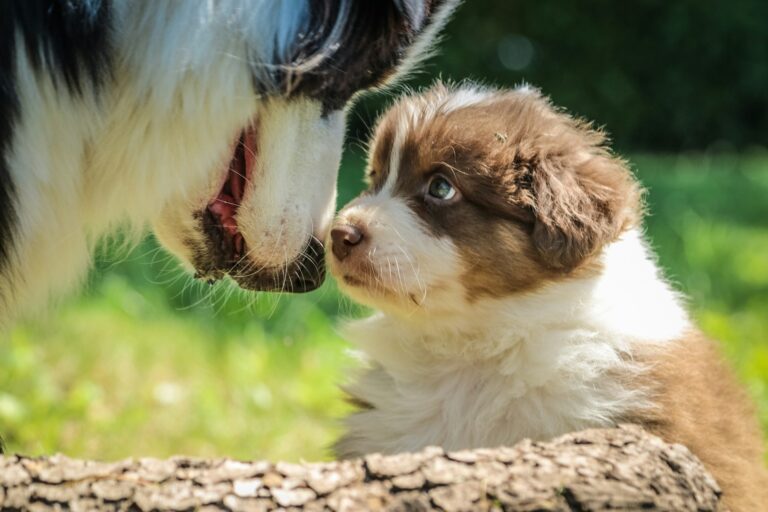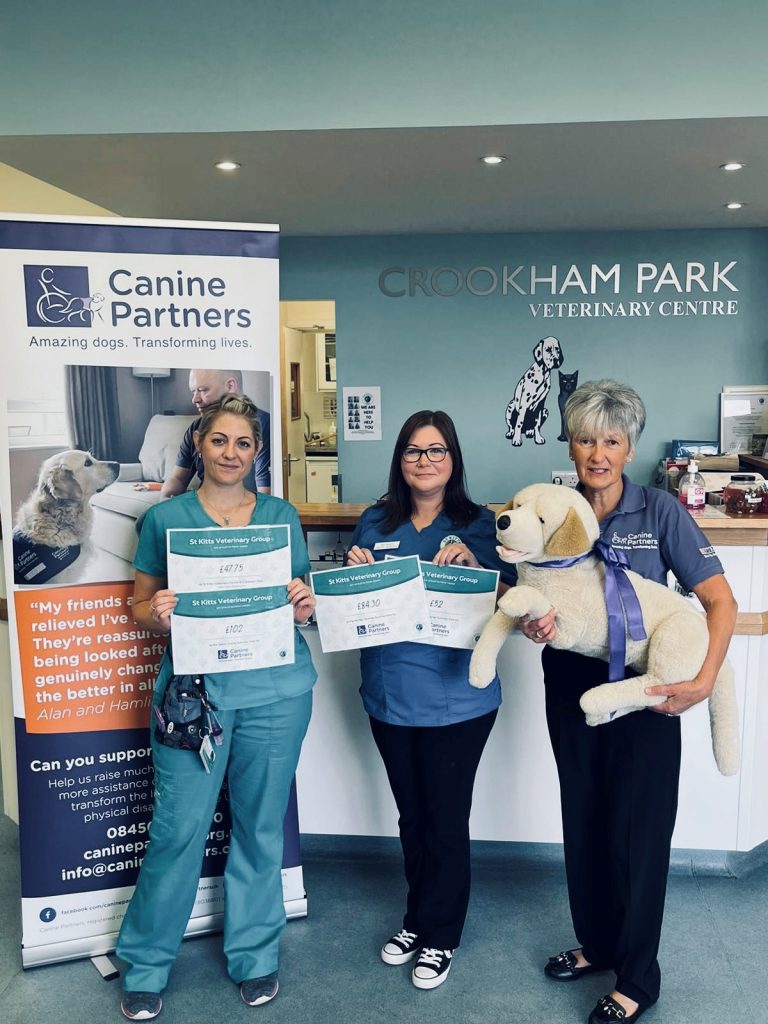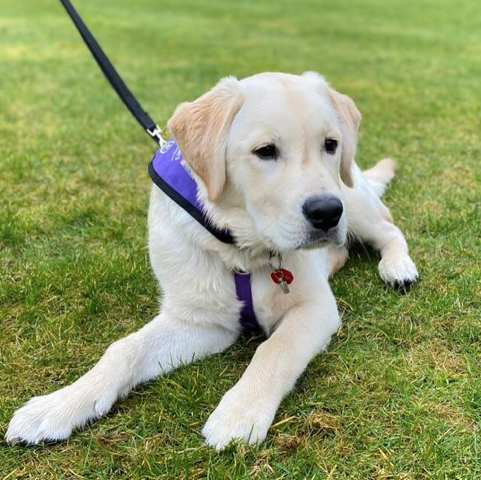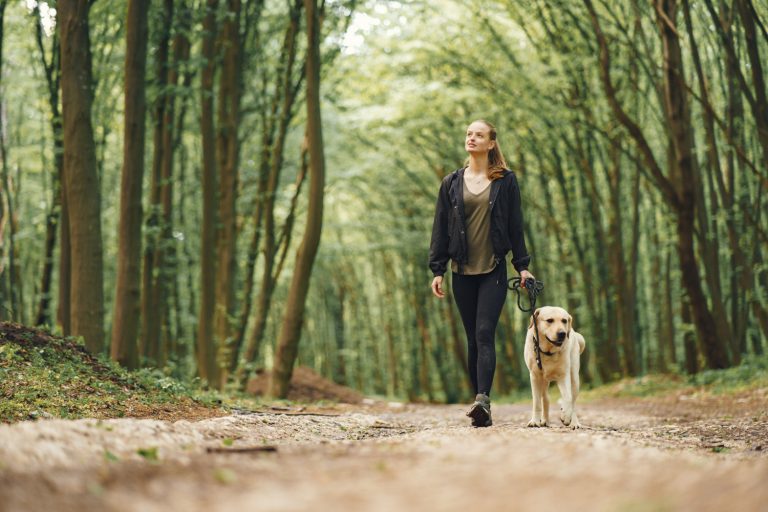
Are you considering welcoming a furry feline friend into your home? Understanding the characteristics of the most common cat breeds can help you make an informed decision about which breed might be the best fit for you and your lifestyle.
Here’s a look at some of the most beloved cat breeds in the UK, known for their unique traits and endearing personalities.
The quintessentially British breed, the British Shorthair, has a distinctive stocky body, dense coat and charming, round face. This breed is known for being affectionate, making it a perfect family pet. They are notably calm and easygoing, which complements a variety of household environments.
The Siamese cat, with its striking blue almond-shaped eyes and elegant, muscular body, is a marvel of feline beauty and grace. This breed is known for its intelligence, playful nature and often engages in lengthy conversations with their owners. Siamese cats thrive on social interactions and form strong bonds with their families.
Ragdolls are known for their mesmerising blue eyes and beautiful semi-long hair, they are gentle and often seek physical affection, making them ‘lap cats’. Ragdolls are ideal for homes that can provide them with plenty of love and cuddles.
The Bengal cat has a stunning wild appearance with a coat that resembles leopards and ocelots. This breed is vibrant and athletic, requiring regular exercise and mental stimulation. Bengals are particularly interactive and enjoy games that challenge their agility and intelligence.
As one of the largest domesticated cat breeds, Maine Coons are distinguished by their tufted ears, bushy tails and luxurious coats. They are known as gentle giants and possess a friendly and sociable nature. Maine Coons are excellent companions for children and get along well with other pets.
The Scottish Fold is easily recognised by its unique folded ears, giving it a cute owl-like appearance. These cats are incredibly affectionate and calm, preferring quiet environments where they can spend time with their human companions. Their gentle and easygoing nature makes them suitable for families and single-person households alike.
The almost-hairless Sphynx cat stands out due to its exposed skin and pronounced wrinkles. While this doesn’t make them hypoallergenic, they are known to produce fewer allergens than many fluffy cat breeds. Sphynxes are known for their loyalty and playful attitudes, and love to seek warmth and affection from their owners.
The domestic cat which is commonly known as a ‘Moggie’ is the most common cat living in UK homes. However, this cat is of no particular breed and has instead descended from the African Wildcat. Because of their random breeding, they do not have a definite appearance or temperament, so can come in all sizes, coat lengths and colours – from black and white to tabby or tortoiseshell.
When selecting a cat breed, don’t just consider the cat’s physical characteristics and personality traits but also your living situation, the cat’s activity level, and the amount of time you can dedicate to caring for and interacting with your pet. Each cat breed has unique needs and qualities, and finding a compatible companion is essential.
For further advice and quality pet care, contact your local St Kitts practice:
St Kitts Vets Hartley Wintney: 01252 844044
St Kitts Vets Basingstoke: 01256 844944
Crookham Park Veterinary Centre: 01252 913990
Firgrove Veterinary Centre: 01252 877799

One of the most exciting things about bringing a new puppy home is introducing them to new people, animals, environments and experiences. This early exposure plays a crucial role in shaping a confident and sociable adult dog, and is known as puppy socialisation.
Puppies, like humans, go through a critical developmental phase when they are particularly receptive to new experiences. This period, typically from 4 to 12 weeks of age, is when puppies learn to navigate the world around them.
Proper socialisation during this window helps puppies become more confident and less fearful as they grow up. A well-socialised puppy is more likely to view new experiences, people and animals as fun and exciting, not frightening.
Many behavioural issues in adult dogs, such as aggression, anxiety and fear, can stem from inadequate socialisation during puppyhood.
By exposing puppies to a wide variety of stimuli in a positive and controlled manner, they learn to cope with new situations without resorting to negative behaviours.
Socialised dogs are typically less reactive and more adaptable, which means they’re less likely to develop issues like excessive barking, chewing, or aggression.
Socialisation experiences, especially positive ones, contribute to strengthening the bond between the puppy and its owner. It builds trust and confidence in the puppy’s ability to navigate new situations with the support of its human companion.
Socialised puppies are easier to manage and less likely to get into dangerous situations.
For example, a dog that’s comfortable around people is less likely to bite out of fear or anxiety. Similarly, a dog that’s accustomed to various sounds and sights is less likely to bolt or become uncontrollably frightened in noisy or busy environments. This not only keeps the dog safer but also protects people and other animals around them.
Socialisation lays the foundation for successful training. Puppies that have been well-socialised are typically more receptive to obedience training and can learn new commands more quickly and effectively.
Routine care, such as veterinary check-ups and grooming, can be stressful for dogs. However, if a puppy has been gently exposed to handling by different people and to various environments, they’re more likely to be calm and cooperative during these visits. This not only makes the process smoother but also helps ensure that your dog receives the best possible care without undue stress.
Socialised dogs are typically more pleasant companions in social settings, whether it’s meeting other dogs on walks, welcoming visitors to your home, or accompanying you on outings. They’re better equipped to read and respond to social cues from both humans and other animals, leading to more positive interactions and reducing the likelihood of misunderstandings or conflicts.
Begin socialisation as soon as you bring your puppy home, keeping in mind the balance between exposure and the puppy’s vaccination schedule.
Expose your puppy to different people, environments, sounds and animals, ensuring that these experiences are positive and not overwhelming.
Start with less intense experiences and gradually increase the level of stimulation as your puppy becomes more comfortable.
Use treats, praise and play to create positive associations with new experiences and people.
Socialisation is a process. Regular, gentle exposure to a variety of experiences is key to building a well-rounded adult dog.
If you would like more specific advice about socialising your puppy, contact your local St Kitts practice:
St Kitts Vets Hartley Wintney: 01252 844044
St Kitts Vets Basingstoke: 01256 844944
Crookham Park Veterinary Centre: 01252 913990
Firgrove Veterinary Centre: 01252 877799

This summer, you may have spotted some of our team spending their warm and sunny weekends at the fetes that were held across our local area. On our stalls we had lots of goodies up for grabs as part of our raffles to help us raise money for Canine Partners – an amazing charity that pairs specially trained assistance dogs with people who have physical disabilities.
Thanks to a brilliant team effort and the generosity of all of you, our wonderful local friends, we were able to raise over £286! We recently welcomed Lynda Mellor from the charity to Crookham Park, to collect the money that had been raised.
We’d like to say a huge thank you to all staff who helped prepare for the fetes beforehand and helped out on the big days. We couldn’t have done it without you!
Canine Partners rely solely on donations to help continue their incredible work. We first learned of the charity when our Hartley Wintney clinic met Canine Partner, Tia. As a working dog, the charity take special care in ensuring that Tia had regular health checks, including a full ‘MOT’ a couple of times a year (which she passed with flying colours every time!).
Tia enabled her ‘partner’ to lead an independent life, helping with many tasks around the home and travelling far and wide – including studying for a Masters Degree at Exeter University before heading to Scotland. This miraculous transformation from house bound to independence is only possible with Tia’s gentle care and assistance.
More recently, we’ve had the pleasure of seeing the lovely Hartley grow up. He’s a Labrador X Golden Retriever cross, born in September 2021, and will soon complete his first year of training with a volunteer Puppy Parent under the guidance of a Puppy Instructor from the charity.

Each partnership costs £30,000 from selection as a puppy, right through to the dog’s retirement. When Hartley passes his specialist training around September 2023, he’ll be partnered with one of the many people waiting for a working assistance dog.
All your kind donations are supporting Hartley on his journey!
If you’d like to find our more about the charity, visit https://caninepartners.org.uk/.

For some pets (and their owners), a trip to the vet can be daunting; conjuring up a mixture of emotions, from feeling anxious and nervous, to stressed. But it doesn’t have to be that way!
In this blog, we’ve put together some top tips to ease your pet’s anxiety, so your next trip is as calm and stress-free as possible:
A good place to start is getting your pet used to being handled, so it doesn’t come as a shock at their appointment.
It’s worth performing mock examinations at home, inspecting their paws, teeth and ears on a daily basis. As well as touching their legs, head, chest and lifting their tail. Giving them a massage and lots of positive reinforcement can help to make it an enjoyable experience.
Once your pet is comfortable with you handling them, ask family members or friends to do the same, to help them get used to different people.
If you’ll be using a crate to transport your pet to the vets, start introducing them to it early on to minimise any anxiety.
Leave the crate in a safe place, like your living room or bedroom, with the door open and toys or treats inside, so your pet can enter the crate freely.
It may take days or weeks until they are comfortable and confident to enter willingly. Make sure it is a positive experience, so don’t force them into the crate, or leave it until the day of the vet’s visit.
Try to take your pet out in the car to visit different locations, so they don’t just associate getting in the car with a trip to the vets.
To make the trip to the vets easier, it’s beneficial to familiarise your pet with the setting – from the smells, to the experience of being with other animals and staff. A good way to do this is to attend regularly for non-invasive, routine check-ups, like getting your pet weighed. You can even ask your local St Kitts practice if you can pop in to get your pet used to the environment, when it’s not too busy.
If your pet is particularly anxious and it worsens around other animals or humans, it’s a good idea to try and book your appointment for a quieter time of day. It will also mean less waiting time, which will help to reduce stress levels.
It’s good to come armed with plenty of your pet’s favourite treats to reward calm behaviour. This positive reinforcement works best after they’ve had their checks and treatments, but can be given for entering the crate willingly, being well-behaved on the journey and waiting nicely, to help alleviate any stress from the situation.
Your pet can pick up on any anxious behaviour, so keeping your body language and voice calm will help to reassure your pet.
Try to avoid stressful situations too; leaving plenty of time to get to your appointment is a simple way to reduce stress on the day.
Packing a toy, their usual blanket or bed, will provide a familiar smell of home, which can be soothing for your pet, especially if they are having a longer stay.
Bringing your pet’s favourite toy can help to distract them during the appointment, especially if they are having a procedure done, like a temperature check.
If your pet finds being at the vets stressful, turn it into a positive experience by taking them outside to play and have fun together – just ask to be called when it’s your turn.
Having distance from other anxious animals will help to keep your pet calm, so instead of waiting inside for your pet’s prescription or medication, head outside to play again and keep the experience positive.
You can book an appointment online for your local St Kitts practice or, alternatively, give one of our branches a call to speak with the team.
St Kitts Veterinary Centre: 01252 844044
Basingstoke Veterinary Centre: 01256 844944
Crookham Park Veterinary Centre: 01252 913990
Firgrove Veterinary Centre: 01252 877799

We’re so lucky that there are plenty of fantastic dog walking spots in Hampshire!
To help you make the most of the great outdoors, we’ve put together some of our favourite dog-friendly strolls in the county.
The walk at Dogmersfield Park takes you through woodland, across the parkland in the heart of the estate, which is home to the luxury 5 star hotel, ‘The Four Seasons’ and along the canal. It’s a lovely flat walk and the perfect rural escape, with some spectacular views. You never know, you may even be able to do a bit of celebrity spotting whilst you’re there!
This is a fantastic walk across the countryside and the perfect place for your dog to run around. Anstey Park alone has 32 acres to explore. It will take you along a picturesque river and through open farmland. You’ll get to see a number of different animals on route, including alpacas, donkeys, pigs and geese – which is an added bonus, especially if you have young children in tow.
Farley Mount Country Park offers a beautiful woodland with stunning views and is ideal for dog walking.
On your walk, you may find the famous monument, which can be seen for miles, that the country park is named after. The monument honours a race-winning horse named ‘Beware Chalk Pit’, who came back from defeat in 1734, a year after having fallen into a chalk pit whilst out fox hunting.
The New Forest is perfectly suited to your canine companions, thanks to it’s sprawling open landscape, winding tracks and wooded valleys. The doggy paradise includes over 140 miles of safe off-road tracks, 40 miles of coast to explore and plenty of new and interesting sights and smells for them to enjoy.
Some of our favourite trails include the Huff Duff, Hale Purlieu and Buckland Rings.
Ludshott Common is an area of natural beauty and one of the largest areas of heathland in East Hampshire, covering 705 acres. Full of rich colour from the heather and gorse, complete with livestock roaming.
Waggoners Wells, also part of the National Trust reserve, has beautiful ponds to walk around and you’ll discover a lovely wishing well that inspired renowned poet, Alfred Lord Tennyson.
Crabtree Plantation offers scenic views and features the impressive archway, ‘Bolton Arch’, which originally marked the entrance to the Hackwood estate. There are lots of routes to explore through woods and fields, perfect for taking your dog off the lead and practising recall.
You’ll have the chance to spot many butterflies along the way. If you are also travelling with children, there is a playground with a zip line, climbing frame and swings at the bottom of Crabtree.
Fleet Pond offers excellent views and is the largest freshwater lake in Hampshire. The nature reserve has 141 acres of heathland, woodland and marshland, and is great for spotting many species of birds, butterflies, dragonflies and wild flowers while on your walk.
The Vyne is a stunning 16th century Tudor house, run by the National Trust, that Henry VIII himself often visited. It’s set in picturesque gardens with sweeping lawns and a stunning lake. The expansive woodlands are an idyllic spot for seeing bluebells in the Spring. There’s also wetlands with a tranquil bird hide, a cafe, shop and playground.
We hope you enjoy getting out and exploring with your dog! If you become concerned about your pet, get in touch with your local St Kitts practice.
St Kitts Veterinary Centre: 01252 844044
Basingstoke Veterinary Centre: 01256 844944
Crookham Park Veterinary Centre: 01252 913990
Firgrove Veterinary Centre: 01252 877799

When welcoming a new puppy into your family and introducing them to an environment with unfamiliar scents and sounds, crate training can be a great way to help them settle.
There are a number of good reasons to crate train your puppy, including:
Crates come in all shapes and sizes; the main thing to take into account is that your puppy’s crate should be big enough that they can stand up and turn around easily in it, even as they grow. Make sure they have the room to lie down comfortably, with enough space for bedding and a water bowl.
There’s no one-size-fits-all approach to crate training – it’s all about what works for you and your pup. Starting them early on should help it all go smoothly, but it’s important to take it one step at a time.
Once you’ve set your puppy’s new crate up, make sure you have the door secured open so that it won’t shut on them. Adding some of their bedding, soft blankets or towels inside can make it more welcoming and comfortable.
Getting them used to their crate can take as little as a few minutes or as long as several days. They may be naturally curious and investigate the crate straight away – if they show interest, reward them with treats. If they don’t, or are even a bit wary of the crate, this is absolutely fine and will just mean you need to keep rewarding them positively when they choose to approach it. You can try putting treats or their favourite toy near to it and, as they gain confidence, move these to just inside the door.
Once your puppy has happily settled and is spending time in their crate without any worries, you can start gently shutting the door (but don’t lock it) for short periods of time to help them get used to it. Some owners choose to do this step while their puppy is eating meals inside the crate, as it helps to create a positive association. You could provide a long lasting chew or a Kong while they’re inside too.
It’s worth repeating this step for several days, making sure your puppy is relaxed throughout.
As your puppy gets used to the door being closed, you can gradually increase the length of time you do this for. You should be able to introduce a command word such as ‘crate’ or ‘bed’ to encourage them in, which they can be rewarded for.
Once they are comfortable with this, start locking the door while staying near to the crate and then build up to leaving the room for a few minutes if they are calm. When you return to the room, sit quietly for a few minutes, then let your puppy out of the crate and reward them for good behaviour.
As before, repeating this step over time will help build up to you leaving them in the crate alone when you are out of the house, as well as overnight.
When your puppy can stay comfortably in their crate for around 30 minutes with you out of sight the majority of the time, you can begin leaving them crated while you’re out of the house for short periods.
Start by putting them in the crate using your normal command and a treat. It can be useful to add a few safe toys to the crate too. Try not to make departures emotional and prolonged – instead, praise your puppy for getting in the crate, give them their treat and then leave quietly. When you return home, keep it low-key as to not over excite your puppy. Over time, you can build up how long you are able to leave the house for, up to a maximum of 4-5 hours.
Tip: While at home, continue to crate your puppy for short periods from time to time, as it’ll prevent them from associating crating with being left alone.
For the first few months after you bring your puppy home, sleep might come sparingly! They have tiny bladders, so it’s very likely that they will need to go to the toilet often. That’s why crate training your puppy at night is important.
To help get them in the crate, use your normal command and a treat. Initially, you may want to place it in your bedroom or nearby in a hallway overnight, so that you can hear your puppy whine in cases where they do need to go. Eventually, when they are happily sleeping through the night, you can begin to gradually move their crate to a new location if you prefer.
If you have any questions or are concerned about your pet and would like some advice, please get in touch with your local St Kitts practice.
St Kitts Veterinary Centre: 01252 844044
Basingstoke Veterinary Centre: 01256 844944
Crookham Park Veterinary Centre: 01252 913990
Firgrove Veterinary Centre: 01252 877799